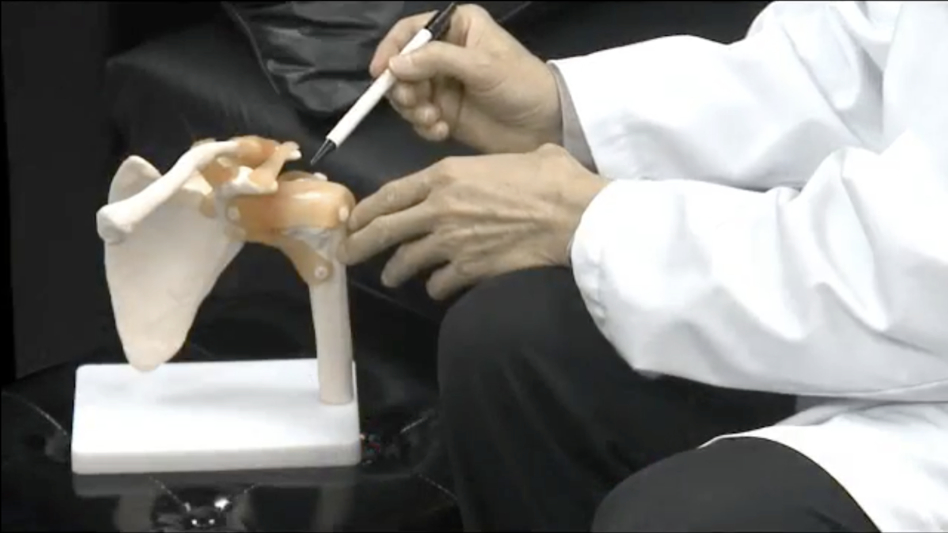The Most Common Shoulder Problems and Their Treatments
November 23, 2022
Hello and welcome to Yuma Health and Happenings. I’m Dr. Ron Clark, Orthopedic Surgeon and founder of The Bone and Joint Center of Yuma. Today I want to talk about the shoulder with its complex form and functions. We’ll also discuss what happens when the shoulder stops performing those functions.
The Anatomy of the Shoulder
The shoulder is comprised of three separate bones, the arm bone, the shoulder blade, and the collar bone. Your shoulder is connected to the rest of the body by the inner end of the collar bone and supported by muscles that connect to the neck and upper back.
Shoulder blades are completely covered by muscles and lie on the back of the rib cage. The major joint of the shoulder is where the arm bone and the shoulder blade meet, but the end of the collar bone also connects with the shoulder blade at a different location. This connection is also a flexible joint.
The fact that the shoulder blade can glide over the rib cage makes for a third joint and increases the movement that our arms can make. The surface covering the arm bone and shoulder blade socket is called joint cartilage and is 70% water. This surface allows the two ends of the bone to move smoothly over each other.
Movement and Injury
Because the upper end of the arm bone is round and the shoulder blade bone forms a shallow cup, the shoulder is considered a ball and socket joint. This mechanism explains how we can use our shoulders to move our hands nearly all around our head and body.
This joint of the body, in fact, is the one with the greatest amount of movement. Since the socket side of the joint is much smaller than the arm bone, a great deal of force and energy is passed through the muscles and tissues that hold the shoulder together.
Many of the common shoulder problems occur around the muscles and the tissues that are supposed to hold your shoulder bones together.
The Most Common Shoulder Problems
Most shoulder problems occur due to friction that occurs between the shoulder blade muscles and their protective covering called the bursa. When the friction causes inflammation, the area becomes painful, and people have trouble lifting their hands above shoulder level.
This problem is called a bursitis and is closely associated with repetitive activities that cause the problem after years of use. The pain of bursitis can be quite substantial, and many people go to the emergency room each year with a rapid onset of shoulder pain that turns out to be bursitis.
Other painful conditions of the shoulder include tendonitis–where there is damage and irritation of the tendons that move the bones, arthritis–where there is breakdown and wearing away of the cartilage layer, and damage to the muscle attachments onto the arm bone–which can weaken the shoulder and cause pain.
A prevalent sign of each of these conditions is pain and many times the shoulder can be affected by more than one condition. It takes a careful examination by an experienced physician to appropriately assess a painful shoulder and understand the potential sources of pain.
Diagnosing Shoulder Conditions
To make an appropriate treatment recommendation for a painful shoulder it is very important to establish what the problem is before initiating treatment. Many times, x-rays are necessary to assess the condition of the joint surfaces. This technology, however, cannot assess the muscles and joint tissues around the joint.
An MRI machine gives us the most information about a painful shoulder and has greatly improved the accuracy of treatment. Treatments for shoulder problems vary due to a lack of clear insight into which tissues are affected and what caused the damage.
Potential Treatments for the Shoulder
The easiest treatment involves using pills like ibuprofen or its cousin, Aleve. These medicines are approved for use without a prescription but should be used carefully. This extra care is due to possible undesired side effects like stomach irritation.
When pills are not effective, an injection of cortisone-like medications can eliminate or reduce much of the pain. Physical therapy can be helpful for some conditions but may not help problems that need surgical treatment.
If you’re having pain of the shoulder, or reduced range of motion, request an appointment with The Bone and Joint Center of Yuma. Our team can diagnose the problem and recommend a treatment plan that’s specific to you.